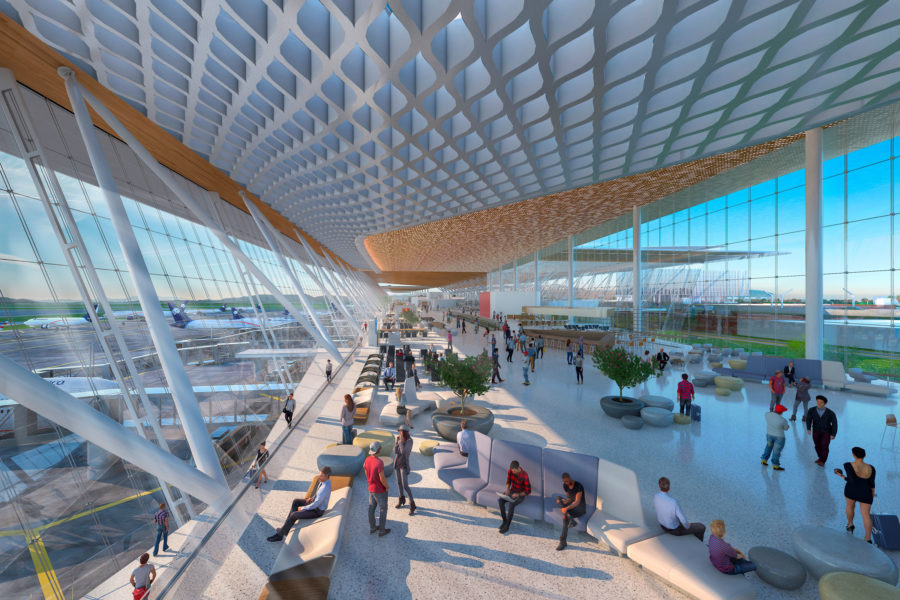Story at a glance:
- Architects at CallisonRTKL share how biophilia and considering the local culture benefits airports.
- The Guadalajara terminal project was designed to be a net-zero energy, net-zero carbon airport.
- Rethinking the way people move through airports was a big part of CRTKL’s design.
When the team at CallisonRTKL was tasked with designing a new terminal for the Guadalajara Airport, they knew they wanted it to be different. The team took the project through schematic design before the pandemic, when the project was put on pause and, later, a local architect was brought onboard to execute the design CRTKL created.
“This is going to be a second standalone, brand-new terminal geared toward international travel coming into Guam. Our focus primarily was on not just creating a world-class terminal, but really addressing the passenger experience in this day and age, post 911, post-Covid,” says architect Kevin Horn. “There’s a lot of tension around travel for passengers, so we want to make the environment in the airport much more welcoming, much more conducive to calming people as they move through this type of space.”
Horn says biophilic design was one of the airport design strategies their team used. The goal was also to create a net-zero terminal. One of their big questions: How could they provide plentiful daylight without the glare and heat gain?

Rendering courtesy of CallisonRTKL
Ultimately they designed a large canopy for both shade and aesthetics. “It also reduced glare while still providing daylight and views, which is important for us,” says architect Pablo Laroche. The large glass wall is shaded so it doesn’t transmit a lot of heat or glare to the inside. It’s all the benefits of transparency, without the inconvenience.
“Going back to the passenger experience, airports tend to be a sequence of isolated events as you move through them,” Horn says. “Ticketing, security, going through the concourse, going to your gate—they all are fairly isolated.” CRTKL designed the experience so that from the moment you enter the building, you can see what’s ahead. “You always have a sense of where you’re going in your sequence. Even in security, we have views past security to the concourse. We have views on the sides down to baggage claim below. It’s a very open experience. People tend to feel calm when they can see what’s ahead.”

Rendering courtesy of CallisonRTKL
Views to nature outside are also calming, he says. Biophilic design continues to play a role in the landscaping strategy, as landscaped areas transition passengers from outside to in, blurring the lines between interior and exterior. Native plants tell a story about the region so you know where you are while also creating a softer transition into the terminal.
“As you transition through security, the ceiling is a perforated pattern that filters all the daylight coming in and creates these organic patterns on the ground with filtered light coming in,” Laroche says. In the often-stressful baggage area you’ll find a living green wall to create another sense of calm.

Rendering courtesy of CallisonRTKL
Airports are often these very utilitarian spaces people push though, Horn says—you need to get from point A to point B—but designers shouldn’t lose sight of passengers’ emotions. “Airports also tend to be very architecturally driven, iconic buildings with high volumes and big overwhelming spaces.”
CRTKL’s design challenges that notion. “We’re talking about biophilia and sustainable things, and those are a big part of the toolkit, but we also look at bringing in program things that talk about the local culture. For instance, in the concourse, have a space where music and dance can happen and bring in local food vendors so you get a taste and a feel for the city.”
In the lounge areas, they recommend a variety of types of seating for different types of passengers, complete with play areas for kids and rotating art exhibits. “All of these things go a long way to create an amenity you typically don’t see in airports,” Horn says. It’s all part of a more interesting, engaging design that’s both calming and helps passengers pass the time when needed.




